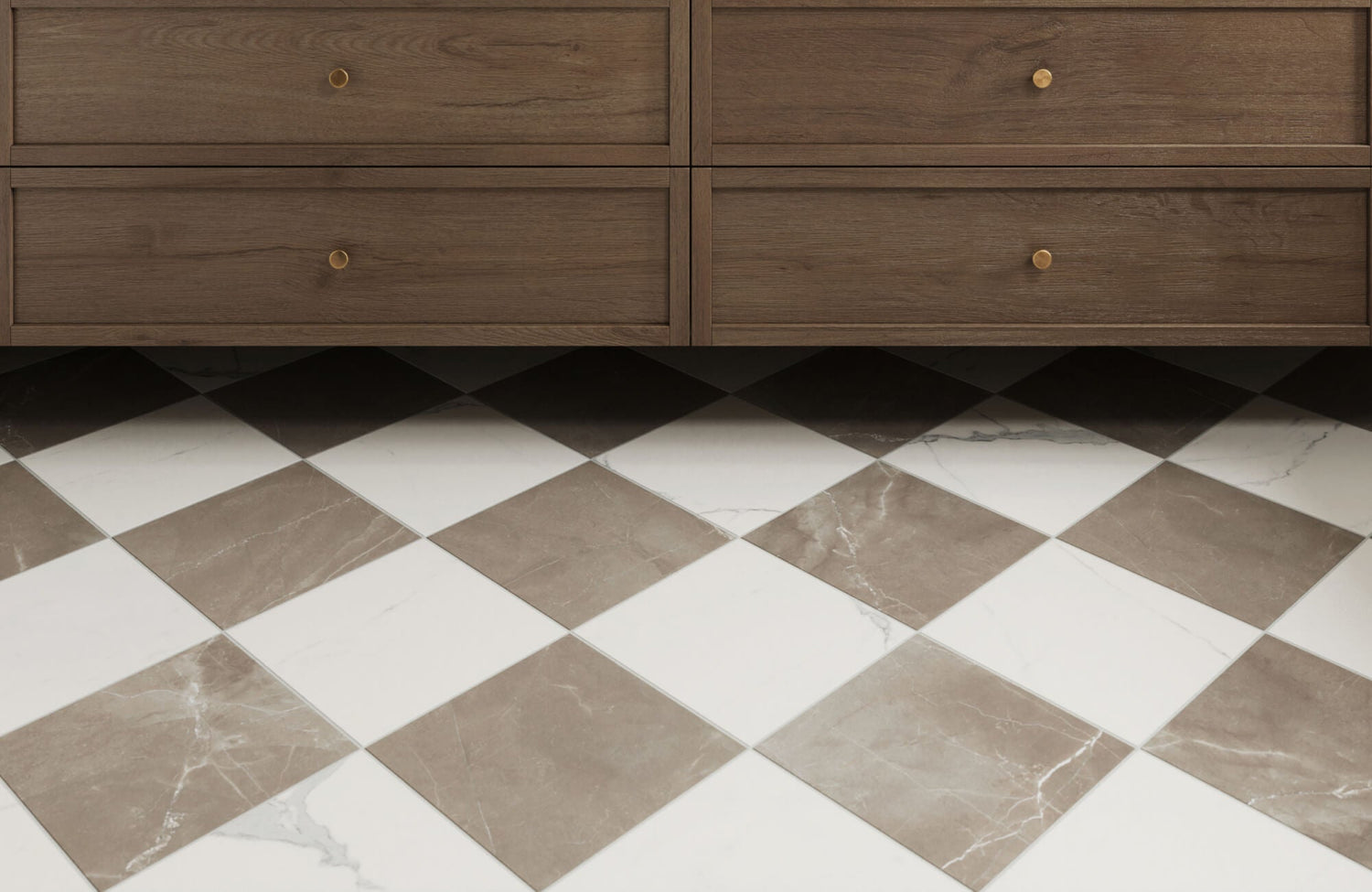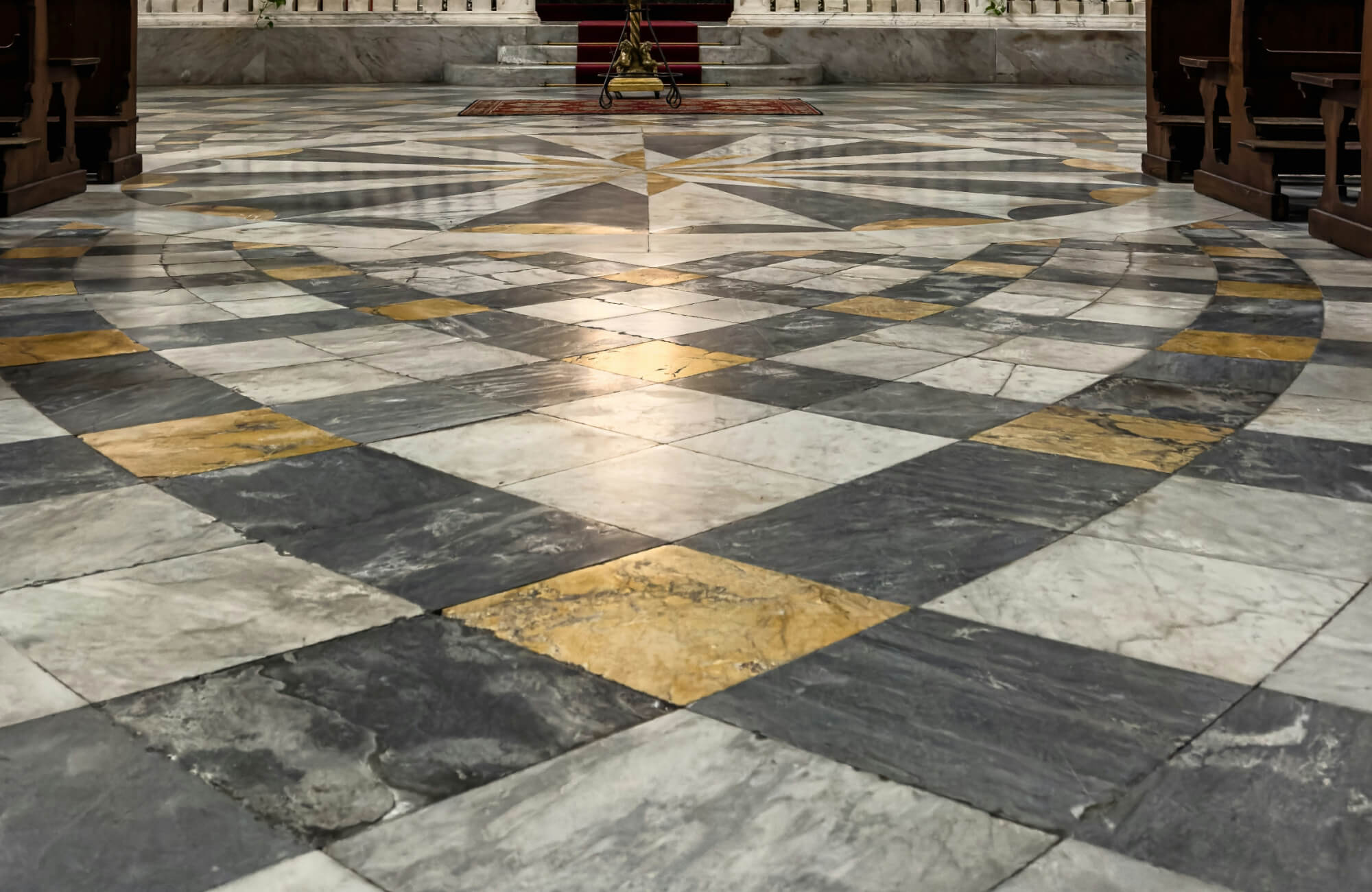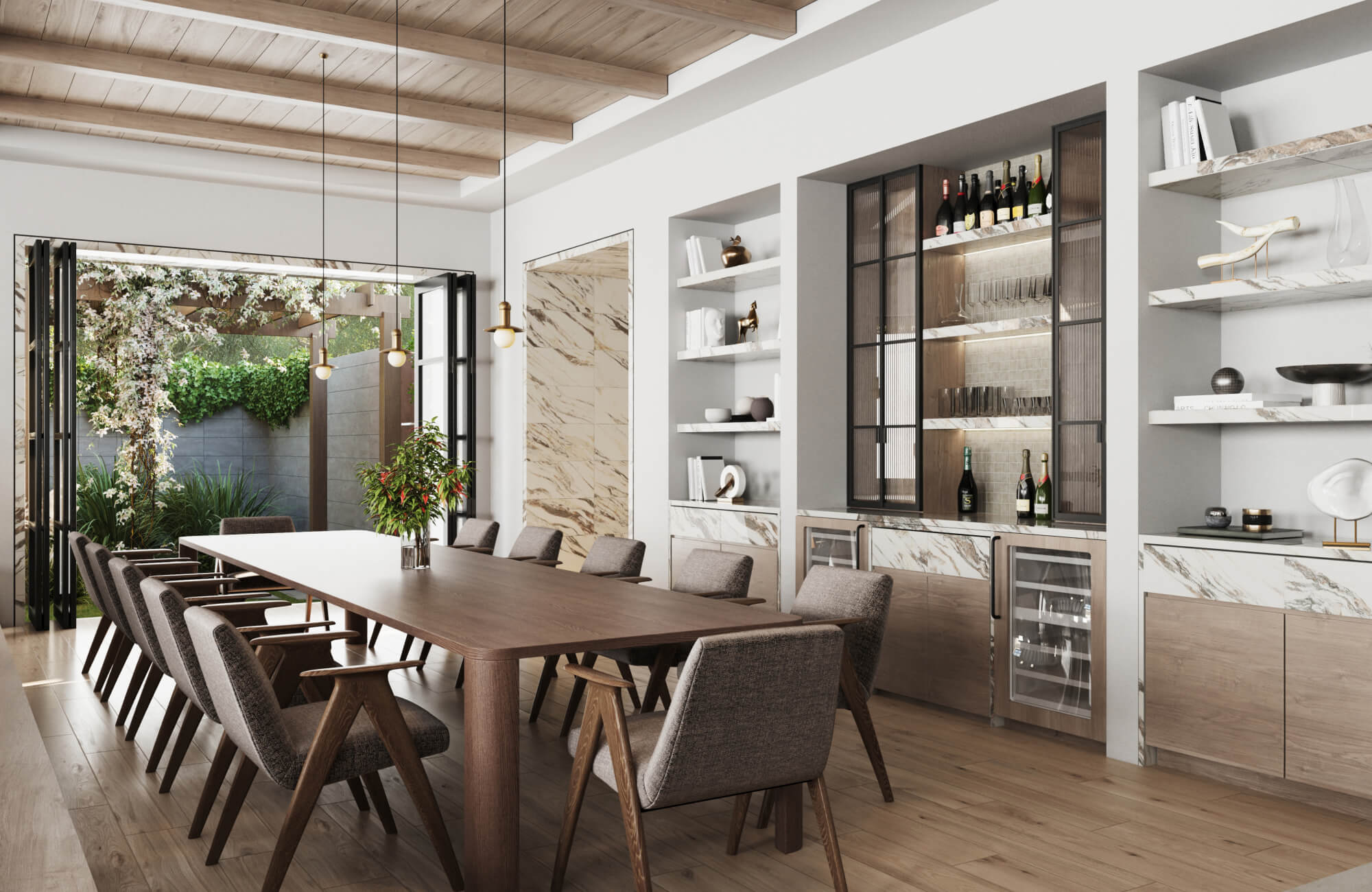The checkerboard pattern, an iconic emblem of classic design, has adorned floors for centuries. Its association with timeless elegance and order is deeply ingrained in the collective aesthetic. Typically characterized by a grid of alternating squares, the checkerboard has historically been synonymous with a straightforward, orthogonal arrangement. However, the evolution of design and architectural trends has introduced a spectrum of interpretations, challenging this traditional perception. This exploration delves into the multifaceted world of the checkerboard floor, examining its historical roots, geometric properties, and the diverse applications that blur the lines between straight and diagonal orientations. By scrutinizing the intricacies of this pattern, we aim to uncover the underlying principles that shape its visual impact and its adaptability to contemporary spaces.

The Classic Checkerboard
The checkerboard pattern is a ubiquitous visual motif characterized by a grid of equal-sized squares arranged in alternating colors, typically black and white. Its simplicity belies a rich history and profound impact on human perception and psychology.
Historical Roots and Evolution
Rooted in antiquity, the checkerboard pattern finds its earliest recognizable form in the games of chess and checkers, where the alternating squares dictate the movement of pieces. The stark contrast between the light and dark squares provides a clear visual framework for strategic gameplay. Over time, this pattern transcended the realm of games to become a pervasive element in architectural and decorative design. The practicality of using square tiles for flooring, combined with their ability to create a visually striking and durable surface, led to the widespread adoption of the checkerboard pattern in homes, public spaces, and commercial establishments.
Geometric Foundations
Geometrically, the checkerboard is a perfect expression of order and regularity. When implemented on a floor, the square tiles are typically aligned with the room's sides, establishing a clear and consistent grid-like structure. The straight lines formed by the tile edges contribute to the overall rectilinearity of the space, reinforcing a sense of stability and balance. This geometric precision has made the checkerboard a popular choice for creating a foundation of visual harmony in interior design.
Visual Perception and Psychological Impact
Beyond its geometric appeal, the checkerboard pattern exerts a subtle yet powerful influence on human perception. The alternation of light and dark squares creates a visual rhythm that draws the eye across the surface, enhancing spatial awareness. The high contrast between the colors can also impact our perception of depth and scale, making a space appear larger or smaller depending on the specific arrangement of the pattern.
Cultural Significance and Design Versatility
Psychologically, the checkerboard pattern is often associated with feelings of order, stability, and tradition. Its regularity and predictability can evoke a sense of security and familiarity. However, the pattern's ability to create optical illusions and visual interest can also stimulate curiosity and intellectual engagement. The checkerboard's versatility allows it to adapt to various design aesthetics, from the classic and timeless to the modern and avant-garde.
Reimagining Checkerboard Floors with a Diagonal Twist
While the traditional checkerboard floor is characterized by its orthogonal arrangement of squares, a compelling variation emerges when the pattern is rotated 45 degrees, creating a diagonal checkerboard floor. This seemingly simple shift in orientation introduces a dynamic and energetic quality to the familiar motif.
Enhanced Visual and Spatial Dynamics of Diagonal Checkerboard Floors
Diagonal checkerboard floors offer a visually stimulating alternative to traditional layouts, with their intersecting lines creating a sense of movement and depth that can make spaces feel more expansive. As the eye naturally follows the diagonal axis, this arrangement enhances room dimensions by transforming the familiar square tiles into dynamic rhombuses. This shift not only elongates the appearance of the room but also introduces acute angles that add visual tension and excitement. The geometric transformation is especially effective in smaller areas, where it helps to counteract feelings of confinement and infuses a contemporary edge into the classic motif.
Lighting Interactions and Optical Effects
The interplay of light and shadow on the diagonal checkerboard floor further contributes to its visual impact. The alternating colors create a series of light and dark planes that interact with natural or artificial light sources. This interplay can generate interesting optical illusions, such as the apparent warping or bulging of the floor surface. Careful consideration of lighting can be used to accentuate or minimize these effects, allowing for precise control over the desired ambiance.
Historical Significance and Modern Application
The diagonal checkerboard floor has a rich history in design, with notable examples found in various architectural styles. Art Deco, in particular, embraced the geometric and decorative qualities of the diagonal pattern, incorporating it into flooring, wall treatments, and even furniture. The bold and glamorous aesthetic of this era perfectly complements the dynamic energy of the diagonal checkerboard.
Diverse Designs for Checkerboard Flooring
While the classic checkerboard floor and its diagonal counterpart offer distinct visual characteristics, the potential for variation and interpretation within this pattern family is virtually limitless. By manipulating elements such as color, orientation, shape, and scale, designers can create a vast array of unique and captivating designs.
Color Exploration
Beyond the classic black and white palette, exploring different colors can dramatically alter the character of a checkerboard pattern. A two-tone color scheme that uses contrasting shades can create a visually striking and elegant effect. The use of both light and dark shades helps to define the space while adding depth and interest to the flooring. Bold color combinations can create energetic and vibrant spaces, while softer hues can evoke a sense of tranquility and sophistication. Monochromatic variations, using different shades of the same color, can create subtle depth and visual interest. The careful selection of colors can significantly impact the overall mood and atmosphere of a space.
Hybrid Checkerboard Designs
One approach to expanding the checkerboard concept involves combining straight and diagonal elements within a single pattern. This hybrid approach can result in intricate and visually stimulating designs. For example, a checkerboard floor could feature rows of traditional squares interspersed with diagonal bands, creating a sense of rhythm and movement. Alternatively, a grid of squares might be overlaid with a diagonal grid of a different color, generating a complex interplay of lines and shapes.
Asymmetrical Checkerboard Patterns
Breaking free from the rigid structure of the traditional checkerboard floor, asymmetrical designs offer a contemporary and dynamic aesthetic. By offsetting rows or columns of tiles or introducing irregular variations in tile size, designers can create a sense of informality and visual interest. Asymmetrical checkerboard patterns can evoke a feeling of spontaneity and creativity, while still maintaining a strong connection to the underlying grid structure.
Exploring Checkerboard Tile Shapes
The shape of the tiles themselves can also be manipulated to create unique checkerboard variations. While square tiles are the most common, rectangular tiles can be used to elongate the pattern, creating a sense of horizontal or vertical emphasis. Hexagonal tiles offer a honeycomb-like structure that can be visually striking, while irregular shapes can introduce a playful and organic element to the design.
Considerations of Scale and Proportion
The scale and proportion of the tiles in relation to the overall space are crucial factors in determining the visual impact of a checkerboard pattern. Larger tiles can create a sense of grandeur and openness, while smaller tiles can generate a more intimate and detailed appearance. The ratio of tile size to room dimensions can influence the perception of space, with larger tiles potentially making a room feel smaller and vice versa.
Explore the dynamic appeal of checkerboard patterns firsthand by using Edward Martin's sample service. This opportunity allows you to directly experience the quality and texture of your chosen tiles. By ordering a $1 sample, each measuring 4" x 4", you can see how different orientations and colors will look in your space before committing. These samples accurately reflect the color and finish of all tile sizes within each collection, providing a comprehensive preview. This invaluable step ensures that the checkerboard design you select not only meets your aesthetic expectations but also complements the practicalities of your living environment.
Integrating Checkerboard Patterns in Modern Design
The successful integration of a checkerboard pattern into a space requires careful consideration of various factors beyond its orientation, including furniture arrangement, architectural style, and contemporary design trends.
Strategic Furniture Placement
Furniture arrangement plays a crucial role in how the checkerboard pattern interacts with the overall space. Large pieces of furniture can disrupt the visual flow of the pattern, while smaller items may enhance it. Strategically placing furniture in relation to the pattern can create interesting visual relationships and focal points. For example, a sofa placed perpendicular to a diagonal checkerboard floor can create a dynamic contrast, while a coffee table aligned with the pattern can reinforce the sense of order and geometry.
Influence of Architectural Style
The architectural style of a building can influence the suitability of a checkerboard pattern. Traditional styles such as Victorian or Georgian often lend themselves well to the classic checkerboard floor, while modern or contemporary spaces may benefit from more experimental variations. However, the checkerboard's versatility allows it to be adapted to a wide range of architectural styles. For example, a minimalist interpretation of the checkerboard can complement a contemporary space, while a bold and colorful version can add a touch of eclecticism to a traditional setting.
Trends in Checkerboard Design
Contemporary design trends continue to evolve, and the checkerboard pattern is no exception. Minimalist interiors often feature simplified checkerboard floor variations, with a focus on clean lines and neutral colors. Eclectic spaces can incorporate the checkerboard as a bold accent, combining it with unexpected patterns, textures, and colors. Maximalist design embraces the checkerboard as a dominant feature, using it to create visually stimulating and immersive environments.
Expanding Checkerboard Applications
Beyond traditional flooring applications, the checkerboard pattern is finding its way into unexpected spaces. Wall treatments featuring large-scale checkerboard tiles can create dramatic focal points, while checkerboard ceilings add a touch of whimsy and intrigue. Even furniture and accessories can incorporate the checkerboard motif, offering endless possibilities for creative expression.
To help you envision these possibilities, Edward Martin's innovative AR tool provides a seamless way to explore how different checkerboard patterns might transform your space. This cutting-edge technology allows you to virtually preview various designs in real-time, offering an immersive experience that makes it easy to experiment with layouts and color schemes before making a final decision. With this tool, you can confidently choose the perfect design for your home.
Modern Takes on the Classic Checkerboard Design
The checkerboard floor, once a straightforward pattern, has evolved into a versatile design element. While the classic straight orientation remains iconic, the diagonal and its myriad variations offer fresh perspectives. Ultimately, the choice between straight or diagonal depends on personal preference, architectural context, and desired aesthetic. The checkerboard's enduring appeal lies in its ability to adapt and transform spaces, transcending the simple dichotomy of straight or diagonal.










